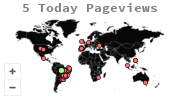INTERACTIVE VALUE FORMATION: TYPES OF CROWDFUNDING AND EXCHANGED RESOURCES’ CHARACTERISTICS
DOI:
https://doi.org/10.23925/2178-0080.2019v21i3.40258Resumo
Crowdfunding is a form of interaction between people who develop projects and those who want to support such initiatives. This paper establishes a relationship between the types of crowdfunding and the characteristics of utilized resources for interactive value formation in the supporter-creator interface of crowdfunding projects. The Social Resource Theory perspective is used to define and classify resources (love, status, information, money, goods, and service) and types of crowdfunding (reward, donation, equity, and debt). In donation crowdfunding, the resources exchanged have more particularistic and symbolic meanings; reward, more concrete and non-particularistic; debt, more particularistic and concrete; and equity, more non-particularistic and symbolic. The proposed theoretical framework helps in selecting the resources appropriate to favor the achievement of project goals.
Downloads
Publicado
Como Citar
Edição
Seção
Licença

Este obra está licenciado com uma Licença Creative Commons Atribuição 4.0 Internacional.






